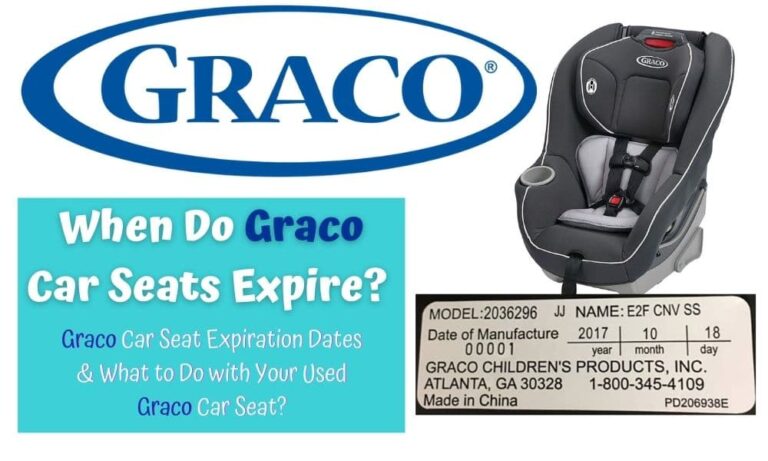Most Popular Car Brand In The World: Unpacking the Dynamics of Global Automotive Leadership
Most Popular Car Brand In The World: Unpacking the Dynamics of Global Automotive Leadership cars.truckstrend.com
In the vast and ever-evolving landscape of the global automotive industry, the title of "Most Popular Car Brand In The World" is a highly coveted, fiercely contested, and often debated distinction. It’s more than just a marketing slogan; it represents a confluence of factors including sales volume, market share, brand recognition, customer loyalty, innovation, and global influence. Understanding which brands rise to the top, and more importantly, why they do, offers profound insights into consumer preferences, technological advancements, and the intricate economic forces that shape our world. This comprehensive guide will delve into the multifaceted nature of automotive popularity, exploring the metrics, the contenders, the driving forces, and the future trends that define leadership in this dynamic sector.
Defining Popularity: Beyond Just Sales Figures
Most Popular Car Brand In The World: Unpacking the Dynamics of Global Automotive Leadership
While sales figures are undoubtedly the most straightforward metric for gauging a brand’s popularity, they don’t tell the whole story. A truly "popular" brand resonates with consumers on multiple levels, demonstrating resilience, adaptability, and a strong connection with its target audience.
Here’s a breakdown of the key metrics that collectively define automotive popularity:
- Sales Volume (Units Sold): This is the most common and easily quantifiable measure. The brand that sells the most vehicles globally in a given year often claims the top spot.
- Market Share: This indicates a brand’s proportion of total vehicle sales within a specific market or globally. A high market share signifies significant influence and competitive strength.
- Brand Recognition and Awareness: How widely known and recognized is the brand? This is built through consistent marketing, heritage, and positive consumer experiences.
- Customer Satisfaction and Loyalty: Surveys (like J.D. Power) measure how satisfied owners are with their vehicles and how likely they are to repurchase from the same brand. High loyalty signifies a deep connection and trust.
- Resale Value: A strong resale value indicates high demand and perceived quality, making the brand a more attractive long-term investment for consumers.
- Innovation and Technology Leadership: Brands that consistently introduce cutting-edge technology, whether in safety, infotainment, or powertrain (e.g., EVs), often gain significant appeal.
- Global Presence and Distribution: A brand’s ability to reach diverse markets through extensive manufacturing and dealership networks is crucial for global popularity.
- Brand Image and Perception: The emotional connection consumers have with a brand, often associated with reliability, luxury, performance, or environmental responsibility.

It’s important to note that different criteria can lead to different "most popular" brands. For instance, a brand might lead in sales but not in customer satisfaction, or dominate a niche luxury segment without having the highest overall sales volume.
The Reigning Giants: Who Are the Contenders?
Based on recent global sales data, certain automotive conglomerates and individual brands consistently feature at the top of the popularity charts. While the exact rankings can fluctuate year-on-year, the key players remain largely consistent.
- Toyota (including Lexus, Daihatsu, Hino): Often considered the undisputed leader by global unit sales, Toyota has consistently held the top spot for many years. Its reputation for unparalleled reliability, fuel efficiency, diverse model lineup (from compact cars to SUVs and hybrids), and strong presence in almost every global market contributes to its dominant position.
- Volkswagen Group (including VW, Audi, Porsche, Skoda, SEAT, Lamborghini, Bentley, etc.): This German powerhouse is a perennial contender for the top spot. Its strength lies in its vast portfolio of brands covering almost every market segment, from affordable family cars to ultra-luxury vehicles. It has a particularly strong foothold in Europe and China.
- Hyundai-Kia Group: This South Korean duo has made remarkable strides in recent decades, offering stylish designs, strong value propositions, impressive warranty programs, and a rapidly expanding EV lineup. They have significantly increased their global market share.
- General Motors (GM – including Chevrolet, GMC, Cadillac, Buick): A dominant force in North America, GM also has a significant presence in other regions, particularly China. Its strength lies in its popular truck and SUV segments, and it’s heavily investing in electric vehicles.
- Stellantis (formed from the merger of FCA and PSA; includes Jeep, Ram, Chrysler, Dodge, Fiat, Peugeot, Citroën, Opel/Vauxhall, Alfa Romeo, Maserati): This relatively new conglomerate boasts a diverse portfolio with strong regional brands and iconic names. Its popularity is spread across North America and Europe.
- Renault-Nissan-Mitsubishi Alliance: While facing some recent challenges, this alliance has historically been a strong global player, particularly with Nissan’s presence in North America and Japan, and Renault’s dominance in Europe.
Factors Driving Brand Popularity
Several fundamental pillars underpin a car brand’s ascent to global popularity:
- Reliability and Durability: This is arguably the most crucial factor for mass-market appeal. Consumers want a vehicle that starts every time, requires minimal unscheduled maintenance, and lasts for years. Brands like Toyota and Honda have built their empires on this reputation.
- Innovation and Technology: From groundbreaking safety features to advanced infotainment systems, and especially the rapid shift towards electric powertrains, technological leadership can dramatically boost a brand’s appeal. Tesla’s meteoric rise is a prime example of technology driving popularity.
- Affordability and Value for Money: For many consumers, the purchase price, running costs, and overall value proposition are paramount. Brands that offer a good balance of features, quality, and price often achieve widespread popularity (e.g., Hyundai, Kia, Skoda).
- Design and Aesthetics: While subjective, appealing design is a powerful draw. A distinctive, modern, or elegant look can set a brand apart and attract a loyal following.
- Global Manufacturing and Distribution Networks: The ability to produce and distribute vehicles efficiently across continents, adapting to local tastes and regulations, is essential for truly global popularity.
- Marketing and Brand Image: Effective advertising, sponsorship, and consistent brand messaging cultivate a desirable image and emotional connection with consumers.
- Customer Service and After-Sales Support: A positive ownership experience, including readily available parts, competent service centers, and responsive customer support, fosters loyalty and positive word-of-mouth.
- Sustainability and Environmental Initiatives: With growing environmental consciousness, brands investing in electric vehicles, sustainable manufacturing processes, and reduced carbon footprints are increasingly appealing to a segment of consumers.
Regional Variations in Popularity
The concept of "most popular" can vary significantly by region due to cultural preferences, economic conditions, local manufacturing presence, and historical brand loyalty.
- North America: Ford, Chevrolet (GM), and Toyota are perennial favorites, particularly known for their trucks and large SUVs. Japanese brands hold strong market share due to reliability.
- Europe: Volkswagen Group brands (VW, Audi, Skoda) are dominant, alongside Stellantis brands (Peugeot, Citroën, Fiat, Opel) and Renault. Local brands often hold sway.
- Asia (excluding China): Toyota and Honda are immensely popular, especially in Japan and Southeast Asia. Hyundai-Kia also has a strong presence.
- China: The world’s largest automotive market is highly competitive. Volkswagen and General Motors have historically been strong, but local Chinese brands like BYD, Geely, Chery, and SAIC are rapidly gaining market share, especially in the EV segment.
- India: Maruti Suzuki holds a dominant position, followed by Hyundai and Tata Motors. Affordability and fuel efficiency are key drivers.
- Africa and South America: Japanese and Korean brands known for durability and value often perform well, alongside some European and Chinese brands.
The Rise of New Contenders and Shifting Tides
The automotive industry is in a period of unprecedented transformation, leading to shifts in brand popularity:
- Electric Vehicle (EV) Revolution: Tesla completely disrupted the market, establishing itself as a popular EV brand globally and pushing traditional automakers to accelerate their EV development. Chinese EV manufacturers like BYD are now also emerging as significant global players, challenging established brands.
- Chinese Manufacturers’ Global Ambitions: Brands like BYD, Geely (which owns Volvo and Lotus), SAIC (MG), and Chery are no longer just domestic players. They are expanding aggressively into Southeast Asia, Europe, and other markets, offering competitive pricing and increasingly sophisticated technology.
- SUV Dominance: The global shift towards SUVs and crossovers has profoundly impacted product portfolios. Brands that adapted quickly to this trend have maintained or increased their popularity.
- Software-Defined Vehicles: The increasing importance of in-car software, connectivity, and autonomous driving capabilities means that tech-savvy brands are gaining an edge.
- Luxury Segment Growth: While not volume leaders, luxury brands like Mercedes-Benz, BMW, Audi, and Porsche maintain strong popularity within their premium segments, driven by brand prestige, performance, and advanced features.
Challenges and Future Outlook
Even the most popular brands face significant challenges that will shape their future popularity:
- Supply Chain Disruptions: Global events, chip shortages, and geopolitical tensions can severely impact production and sales.
- Sustainability Demands: The pressure to transition to a fully electric, carbon-neutral future requires massive investment and retooling for traditional automakers.
- Intensifying Competition: New entrants from the tech sector and aggressive expansion from Chinese manufacturers are increasing competitive pressure.
- Economic Volatility: Inflation, interest rate hikes, and economic slowdowns can depress consumer spending on new vehicles.
- Changing Consumer Habits: The rise of ride-sharing, car subscriptions, and a potential shift away from private car ownership in urban centers could alter the landscape of popularity.
The future of automotive popularity will likely be defined by a brand’s ability to innovate sustainably, offer compelling electric vehicles, integrate advanced software, and adapt to diverse regional preferences while maintaining core strengths like reliability and value.
Practical Advice and Actionable Insights
For consumers, understanding the dynamics of brand popularity is crucial for making informed purchasing decisions:
- Prioritize Your Needs: Don’t just follow the crowd. Determine what’s most important to you: reliability, fuel efficiency, technology, safety, design, or price.
- Research Beyond Sales Figures: Look at consumer satisfaction reports, long-term reliability studies (e.g., Consumer Reports, J.D. Power), and expert reviews.
- Consider Resale Value: Popular brands often hold their value better, which is an important long-term financial consideration.
- Test Drive Multiple Brands: Experience different vehicles firsthand to see which brand’s driving dynamics and interior comfort suit you best.
- Evaluate After-Sales Support: Check the availability of service centers, parts, and the reputation for customer service in your area.
For industry players and aspiring brands, the lessons from popular brands are clear:
- Focus on Core Strengths: Whether it’s reliability, innovation, or design, identify and excel at what you do best.
- Embrace the Future: Invest heavily in electrification, software development, and sustainable practices.
- Understand Regional Nuances: A global strategy must be adaptable to local tastes and regulations.
- Build a Strong Brand Identity: Cultivate a clear, appealing image that resonates with your target audience.
- Prioritize Customer Experience: From the initial sale to long-term ownership, a positive customer journey fosters loyalty.
Table: Key Information on Leading Global Car Brands
Please note: "Price" for a brand itself is not applicable. The "Price Segment" refers to the general market segment where the brand’s models typically compete. Sales figures are approximate annual global unit sales (pre-owned + new, where available) and can vary by reporting period and source. Market share is also approximate and fluctuates.
| Brand Name | Primary HQ | Key Strengths / USP | Global Market Position (Approx. Unit Sales Rank) | Representative Model Range (Examples) | General Price Segment |
|---|---|---|---|---|---|
| Toyota | Japan | Unmatched Reliability, Hybrid Technology, Global Reach | #1 (Consistently) | Camry, Corolla, RAV4, Highlander, Prius, Hilux | Mid-Range to Premium |
| Volkswagen | Germany | Engineering, Quality, Diverse Portfolio, European Strength | #2 (Often) | Golf, Passat, Tiguan, ID.4 (EV), Polo | Mid-Range to Upper Mid-Range |
| Hyundai | South Korea | Value for Money, Design, EV Innovation, Warranty | Top 5 (Hyundai-Kia Group) | Elantra, Sonata, Tucson, Santa Fe, Ioniq 5 (EV) | Economy to Mid-Range |
| Kia | South Korea | Stylish Design, Value, Long Warranty, Rapid EV Expansion | Top 5 (Hyundai-Kia Group) | Forte, K5, Sportage, Sorento, EV6 (EV) | Economy to Mid-Range |
| Chevrolet | USA | Trucks & SUVs, American Muscle, Mass Market Appeal | Top 5 (within GM) | Silverado, Tahoe, Equinox, Malibu, Corvette, Bolt EV (EV) | Economy to Mid-Range |
| Mercedes-Benz | Germany | Luxury, Innovation, Engineering, Performance | Leading Luxury Brand | C-Class, E-Class, S-Class, GLC, EQS (EV) | Premium to Luxury |
| BMW | Germany | Driving Dynamics, Luxury, Performance, Design | Leading Luxury Brand | 3 Series, 5 Series, X3, X5, i4 (EV), iX (EV) | Premium to Luxury |
| Tesla | USA | EV Pioneer, Software, Autonomous Tech, Brand Hype | Rapidly Growing, Leading EV Brand | Model 3, Model Y, Model S, Model X, Cybertruck (Upcoming) | Upper Mid-Range to Premium |
| Ford | USA | Trucks & SUVs, Heritage, North American Dominance | Top 10 Globally | F-150, Ranger, Explorer, Mustang, Bronco, Mach-E (EV) | Mid-Range to Upper Mid-Range |
| Honda | Japan | Reliability, Fuel Efficiency, Engineering, Engines | Top 10 Globally | Civic, CR-V, Accord, Pilot, HR-V | Mid-Range |
Frequently Asked Questions (FAQ)
Q1: What is the most popular car brand in the world by sales?
A1: For many years, Toyota has consistently held the top spot in terms of global unit sales, often followed closely by Volkswagen Group. However, the exact ranking can vary slightly year to year based on reporting periods and market conditions.
Q2: Why is Toyota often considered the most popular car brand?
A2: Toyota’s popularity stems primarily from its reputation for exceptional reliability, durability, and strong resale value. It offers a diverse range of vehicles, including highly popular hybrids, and has a vast global manufacturing and distribution network, making its vehicles accessible and trusted worldwide.
Q3: How do electric vehicles (EVs) affect brand popularity?
A3: EVs are significantly reshaping brand popularity. Brands that were early pioneers in EVs, like Tesla, have seen rapid growth in popularity. Traditional automakers that are successfully transitioning to EVs, such as Hyundai-Kia and Volkswagen, are maintaining or growing their appeal, while those slower to adapt may see their popularity wane in certain markets.
Q4: Are Chinese car brands becoming more popular globally?
A4: Yes, absolutely. Chinese brands like BYD, Geely, and SAIC (MG) are rapidly gaining popularity, particularly in emerging markets and increasingly in Europe. They offer competitive pricing, improving quality, and are at the forefront of EV technology, making them strong contenders for future global market share.
Q5: What factors should I consider when choosing a car brand?
A5: When choosing, consider your specific needs (e.g., daily commute, family transport, off-roading), budget, desired features (safety, tech, fuel type), and critically, the brand’s reputation for reliability, safety ratings, resale value, and the quality of its local after-sales service.
Q6: Will the "most popular" car brand change in the future?
A6: The automotive industry is in a period of unprecedented change, driven by electrification, autonomous driving, and new business models. While established giants have deep roots, the rapid ascent of EV-focused brands and Chinese manufacturers suggests that the landscape of popularity is dynamic and could see significant shifts in the coming decades.
Conclusion
The "Most Popular Car Brand In The World" is not a static title but a dynamic reflection of global consumer preferences, technological advancements, and economic realities. While traditional giants like Toyota and the Volkswagen Group continue to dominate sales charts through their commitment to reliability, diversity, and vast global reach, the rise of innovative EV manufacturers like Tesla and the aggressive expansion of Chinese brands signal a shifting landscape. Ultimately, the brands that best anticipate and adapt to future trends – prioritizing sustainability, software integration, and an unparalleled customer experience – will be the ones that continue to capture the hearts and minds of drivers worldwide. For consumers, understanding these underlying dynamics empowers more informed decisions in a market that is more exciting and diverse than ever before.




